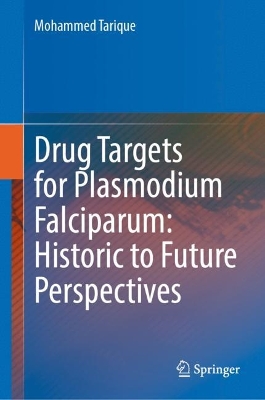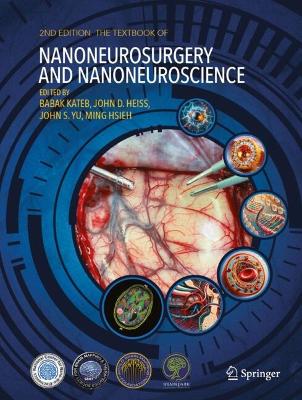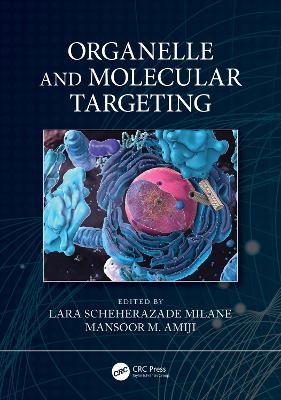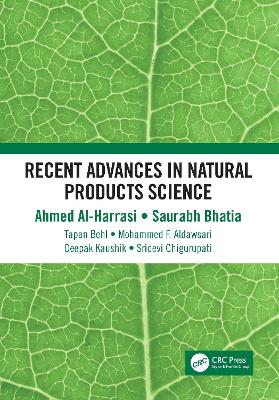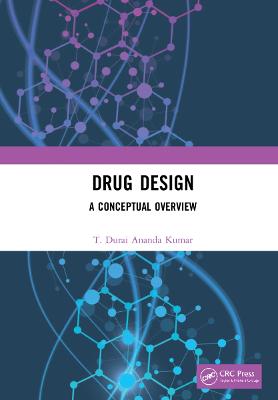Predictive Analytics for Toxicology
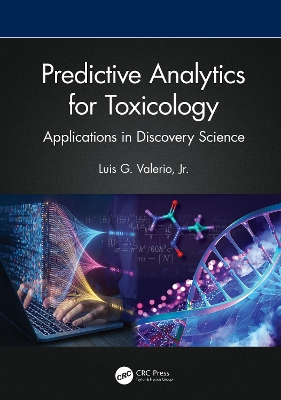 portes grátis
portes grátis
Predictive Analytics for Toxicology
Applications in Discovery Science
Valerio, Jr., Luis G.
Taylor & Francis Ltd
08/2024
238
Dura
9780367775544
Pré-lançamento - envio 15 a 20 dias após a sua edição
Descrição não disponível.
About the Author
Preface
1 Finding No Limit: Discovery Science
1.1 Introduction
1.2 Predictive Analytics
1.3 Data Service
1.4 Examination of Data Quality
1.5 Program Development Intelligence
1.6 Data Visualization
1.7 Decision Analysis
1.8 Conclusion
2 Exploring the Science of Prediction
2.1 Introduction
2.2 The Ubiquitous Application of Prediction Science in Society
2.3 Understanding the Science of Prediction through Machine Learning
2.4 Predictive Modeling of the Human Brain
2.4.1 Human Learning and Logic
2.4.2 Computerized Modeling of Human Learning
2.5 Major Stages in Model Development and Prediction Testing
2.5.1 Model Objectives and Scope
2.5.2 Data Selection
2.5.3 Data Curation
2.5.4 Data Cleaning
2.5.5 Feature Selection
2.5.6 Model Construction
2.5.7 Model Testing
2.6 Current Trends in Machine Learning to Make Predictions
2.7 Conclusions
3 Predictive Analytic Approaches
3.1 Introduction
3.2 Descriptive Analytics
3.3 Diagnostic Analytics
3.4 Predictive Analytics
3.5 Prescriptive Analytics
3.6 Characteristics of a Predictive Model
3.7 Categories of Machine Learning Approaches
3.7.1 Supervised Machine Learning
3.7.2 Unsupervised Machine Learning
3.7.3 Semi- supervised Machine Learning
3.8 Machine Learning Algorithms
3.8.1 Unsupervised Machine Learning Techniques
3.8.2 Supervised Machine Learning
3.9 Conclusions
4 The Role of Predictive Analytics in Translational Science
4.1 Introduction
4.2 What Is Translational Science?
4.3 The Rapid Pace of Translational Science
4.4 Understanding Translational Science Research Tools
4.4.1 Relevant Targets for Translational Science Tools
4.5 Predictive Analytics in Advancing Translational Science
4.6 Development of Clinical Decision- Support Models
4.7 Conclusions
5 Toxicology and Artificial Intelligence
5.1 Introduction
5.2 Fundamental Ideas with AI
5.3 Toxicological Research with AI
5.3.1 Toxicogenomics
5.3.2 Disease and Health-Based Research
5.3.3 Prediction of Toxicity
5.4 Limitations and Considerations of AI
5.4.1 AI and the Human Workforce
5.4.2 AI and Human Behavior
5.4.3 AI and Ethical Considerations
5.4.4 AI and Transparency
5.4.5 Cost of Implementing AI
5.4.6 An Environmental Dichotomy
5.5 Risk Assessment and AI
5.6 Conclusions
6 The Explosion of Computational Approaches for Hazard Identification
6.1 Introduction
6.2 Initiatives and Large- Scale Programs Supporting Computational Approaches for Hazard Identification of Chemicals
6.2.1 Toxicity Testing in the 21st Century: A Vision and Strategy - Tox21
6.2.2 Other Initiatives and Major Activities Using Predictive Analytics Approaches for Toxicology
6.3 Widespread Availability of Public Data, Tools, and Resources for Modeling
6.4 Chemical Hazard Identification, Safety, and Risk- Driven Needs
6.5 Data Science: Uses and Definition
6.6 Conclusions
7 Opportunities for Computational Modeling in Toxicology Prediction
7.1 Introduction
7.2 Current Applications of Computational Modeling in Toxicity Prediction
7.3 Opportunistic Areas in Computational Modeling for Toxicology Prediction
7.3.1 Modeling High- Value Organ- Specific Toxicities
7.3.2 In vitro Modeling
7.3.3 Mixtures Toxicity Modeling
7.3.4 Metabolic Reactions Modeling
7.3.5 Nanotoxicology Modeling
7.3.6 Modeling Based on Clinical Toxicology Data
7.3.7 Epidemiology Data- Based Modeling
7.3.8 Advanced Artificial Intelligence (AI) Systems Modeling
7.4 Looking Forward
7.5 Conclusions
8 Key Challenges in Computational Methods
8.1 Introduction
8.2 Data Availability and Quality
8.3 Model Overfitting and Underfitting
8.4 Feature Selection and Complex Dimensionality
8.4.1 Feature Selection Methods
8.4.2 Complex Dimensionality
8.4.3 Efficiency
8.5 Modeling Complex Chemical Interactions
8.6 Generalizability and Aging of Computational Models
8.7 Accuracy and Validation Assessment of Models
8.7.1 Validation and Verification
8.7.2 Uncertainty
8.8 Translating Models into Practice
8.9 Scalability
8.10 Expertise in Predictive Model Development and Use
8.10.1 Model Selection
8.11 Education
8.12 Other Challenges
8.13 Conclusion
9 Predictive Analytics in Driving Growth in Toxicology
9.1 Introduction
9.2 Predictive Analytics in Toxicology
9.3 Advantages of Using Predictive Data Analytics in Toxicology
9.3.1 Cost and Time Efficiency
9.3.2 Enhanced Accuracy
9.3.3 Reduction in Use of Animals for Experimentation
9.3.4 Improved Access to Predictive Data Analytic Tools
9.3.5 Data- Driven Approaches for Better Decision- Making
9.4 Current Initiatives Fueling Predictive Data Analytics in Toxicology
9.5 Conclusions
Preface
1 Finding No Limit: Discovery Science
1.1 Introduction
1.2 Predictive Analytics
1.3 Data Service
1.4 Examination of Data Quality
1.5 Program Development Intelligence
1.6 Data Visualization
1.7 Decision Analysis
1.8 Conclusion
2 Exploring the Science of Prediction
2.1 Introduction
2.2 The Ubiquitous Application of Prediction Science in Society
2.3 Understanding the Science of Prediction through Machine Learning
2.4 Predictive Modeling of the Human Brain
2.4.1 Human Learning and Logic
2.4.2 Computerized Modeling of Human Learning
2.5 Major Stages in Model Development and Prediction Testing
2.5.1 Model Objectives and Scope
2.5.2 Data Selection
2.5.3 Data Curation
2.5.4 Data Cleaning
2.5.5 Feature Selection
2.5.6 Model Construction
2.5.7 Model Testing
2.6 Current Trends in Machine Learning to Make Predictions
2.7 Conclusions
3 Predictive Analytic Approaches
3.1 Introduction
3.2 Descriptive Analytics
3.3 Diagnostic Analytics
3.4 Predictive Analytics
3.5 Prescriptive Analytics
3.6 Characteristics of a Predictive Model
3.7 Categories of Machine Learning Approaches
3.7.1 Supervised Machine Learning
3.7.2 Unsupervised Machine Learning
3.7.3 Semi- supervised Machine Learning
3.8 Machine Learning Algorithms
3.8.1 Unsupervised Machine Learning Techniques
3.8.2 Supervised Machine Learning
3.9 Conclusions
4 The Role of Predictive Analytics in Translational Science
4.1 Introduction
4.2 What Is Translational Science?
4.3 The Rapid Pace of Translational Science
4.4 Understanding Translational Science Research Tools
4.4.1 Relevant Targets for Translational Science Tools
4.5 Predictive Analytics in Advancing Translational Science
4.6 Development of Clinical Decision- Support Models
4.7 Conclusions
5 Toxicology and Artificial Intelligence
5.1 Introduction
5.2 Fundamental Ideas with AI
5.3 Toxicological Research with AI
5.3.1 Toxicogenomics
5.3.2 Disease and Health-Based Research
5.3.3 Prediction of Toxicity
5.4 Limitations and Considerations of AI
5.4.1 AI and the Human Workforce
5.4.2 AI and Human Behavior
5.4.3 AI and Ethical Considerations
5.4.4 AI and Transparency
5.4.5 Cost of Implementing AI
5.4.6 An Environmental Dichotomy
5.5 Risk Assessment and AI
5.6 Conclusions
6 The Explosion of Computational Approaches for Hazard Identification
6.1 Introduction
6.2 Initiatives and Large- Scale Programs Supporting Computational Approaches for Hazard Identification of Chemicals
6.2.1 Toxicity Testing in the 21st Century: A Vision and Strategy - Tox21
6.2.2 Other Initiatives and Major Activities Using Predictive Analytics Approaches for Toxicology
6.3 Widespread Availability of Public Data, Tools, and Resources for Modeling
6.4 Chemical Hazard Identification, Safety, and Risk- Driven Needs
6.5 Data Science: Uses and Definition
6.6 Conclusions
7 Opportunities for Computational Modeling in Toxicology Prediction
7.1 Introduction
7.2 Current Applications of Computational Modeling in Toxicity Prediction
7.3 Opportunistic Areas in Computational Modeling for Toxicology Prediction
7.3.1 Modeling High- Value Organ- Specific Toxicities
7.3.2 In vitro Modeling
7.3.3 Mixtures Toxicity Modeling
7.3.4 Metabolic Reactions Modeling
7.3.5 Nanotoxicology Modeling
7.3.6 Modeling Based on Clinical Toxicology Data
7.3.7 Epidemiology Data- Based Modeling
7.3.8 Advanced Artificial Intelligence (AI) Systems Modeling
7.4 Looking Forward
7.5 Conclusions
8 Key Challenges in Computational Methods
8.1 Introduction
8.2 Data Availability and Quality
8.3 Model Overfitting and Underfitting
8.4 Feature Selection and Complex Dimensionality
8.4.1 Feature Selection Methods
8.4.2 Complex Dimensionality
8.4.3 Efficiency
8.5 Modeling Complex Chemical Interactions
8.6 Generalizability and Aging of Computational Models
8.7 Accuracy and Validation Assessment of Models
8.7.1 Validation and Verification
8.7.2 Uncertainty
8.8 Translating Models into Practice
8.9 Scalability
8.10 Expertise in Predictive Model Development and Use
8.10.1 Model Selection
8.11 Education
8.12 Other Challenges
8.13 Conclusion
9 Predictive Analytics in Driving Growth in Toxicology
9.1 Introduction
9.2 Predictive Analytics in Toxicology
9.3 Advantages of Using Predictive Data Analytics in Toxicology
9.3.1 Cost and Time Efficiency
9.3.2 Enhanced Accuracy
9.3.3 Reduction in Use of Animals for Experimentation
9.3.4 Improved Access to Predictive Data Analytic Tools
9.3.5 Data- Driven Approaches for Better Decision- Making
9.4 Current Initiatives Fueling Predictive Data Analytics in Toxicology
9.5 Conclusions
Este título pertence ao(s) assunto(s) indicados(s). Para ver outros títulos clique no assunto desejado.
safety and risk of substances;human pharmaceuticals;preclinical safety assessment;machine learning algorithms;predictive data analytics;alternative methods
About the Author
Preface
1 Finding No Limit: Discovery Science
1.1 Introduction
1.2 Predictive Analytics
1.3 Data Service
1.4 Examination of Data Quality
1.5 Program Development Intelligence
1.6 Data Visualization
1.7 Decision Analysis
1.8 Conclusion
2 Exploring the Science of Prediction
2.1 Introduction
2.2 The Ubiquitous Application of Prediction Science in Society
2.3 Understanding the Science of Prediction through Machine Learning
2.4 Predictive Modeling of the Human Brain
2.4.1 Human Learning and Logic
2.4.2 Computerized Modeling of Human Learning
2.5 Major Stages in Model Development and Prediction Testing
2.5.1 Model Objectives and Scope
2.5.2 Data Selection
2.5.3 Data Curation
2.5.4 Data Cleaning
2.5.5 Feature Selection
2.5.6 Model Construction
2.5.7 Model Testing
2.6 Current Trends in Machine Learning to Make Predictions
2.7 Conclusions
3 Predictive Analytic Approaches
3.1 Introduction
3.2 Descriptive Analytics
3.3 Diagnostic Analytics
3.4 Predictive Analytics
3.5 Prescriptive Analytics
3.6 Characteristics of a Predictive Model
3.7 Categories of Machine Learning Approaches
3.7.1 Supervised Machine Learning
3.7.2 Unsupervised Machine Learning
3.7.3 Semi- supervised Machine Learning
3.8 Machine Learning Algorithms
3.8.1 Unsupervised Machine Learning Techniques
3.8.2 Supervised Machine Learning
3.9 Conclusions
4 The Role of Predictive Analytics in Translational Science
4.1 Introduction
4.2 What Is Translational Science?
4.3 The Rapid Pace of Translational Science
4.4 Understanding Translational Science Research Tools
4.4.1 Relevant Targets for Translational Science Tools
4.5 Predictive Analytics in Advancing Translational Science
4.6 Development of Clinical Decision- Support Models
4.7 Conclusions
5 Toxicology and Artificial Intelligence
5.1 Introduction
5.2 Fundamental Ideas with AI
5.3 Toxicological Research with AI
5.3.1 Toxicogenomics
5.3.2 Disease and Health-Based Research
5.3.3 Prediction of Toxicity
5.4 Limitations and Considerations of AI
5.4.1 AI and the Human Workforce
5.4.2 AI and Human Behavior
5.4.3 AI and Ethical Considerations
5.4.4 AI and Transparency
5.4.5 Cost of Implementing AI
5.4.6 An Environmental Dichotomy
5.5 Risk Assessment and AI
5.6 Conclusions
6 The Explosion of Computational Approaches for Hazard Identification
6.1 Introduction
6.2 Initiatives and Large- Scale Programs Supporting Computational Approaches for Hazard Identification of Chemicals
6.2.1 Toxicity Testing in the 21st Century: A Vision and Strategy - Tox21
6.2.2 Other Initiatives and Major Activities Using Predictive Analytics Approaches for Toxicology
6.3 Widespread Availability of Public Data, Tools, and Resources for Modeling
6.4 Chemical Hazard Identification, Safety, and Risk- Driven Needs
6.5 Data Science: Uses and Definition
6.6 Conclusions
7 Opportunities for Computational Modeling in Toxicology Prediction
7.1 Introduction
7.2 Current Applications of Computational Modeling in Toxicity Prediction
7.3 Opportunistic Areas in Computational Modeling for Toxicology Prediction
7.3.1 Modeling High- Value Organ- Specific Toxicities
7.3.2 In vitro Modeling
7.3.3 Mixtures Toxicity Modeling
7.3.4 Metabolic Reactions Modeling
7.3.5 Nanotoxicology Modeling
7.3.6 Modeling Based on Clinical Toxicology Data
7.3.7 Epidemiology Data- Based Modeling
7.3.8 Advanced Artificial Intelligence (AI) Systems Modeling
7.4 Looking Forward
7.5 Conclusions
8 Key Challenges in Computational Methods
8.1 Introduction
8.2 Data Availability and Quality
8.3 Model Overfitting and Underfitting
8.4 Feature Selection and Complex Dimensionality
8.4.1 Feature Selection Methods
8.4.2 Complex Dimensionality
8.4.3 Efficiency
8.5 Modeling Complex Chemical Interactions
8.6 Generalizability and Aging of Computational Models
8.7 Accuracy and Validation Assessment of Models
8.7.1 Validation and Verification
8.7.2 Uncertainty
8.8 Translating Models into Practice
8.9 Scalability
8.10 Expertise in Predictive Model Development and Use
8.10.1 Model Selection
8.11 Education
8.12 Other Challenges
8.13 Conclusion
9 Predictive Analytics in Driving Growth in Toxicology
9.1 Introduction
9.2 Predictive Analytics in Toxicology
9.3 Advantages of Using Predictive Data Analytics in Toxicology
9.3.1 Cost and Time Efficiency
9.3.2 Enhanced Accuracy
9.3.3 Reduction in Use of Animals for Experimentation
9.3.4 Improved Access to Predictive Data Analytic Tools
9.3.5 Data- Driven Approaches for Better Decision- Making
9.4 Current Initiatives Fueling Predictive Data Analytics in Toxicology
9.5 Conclusions
Preface
1 Finding No Limit: Discovery Science
1.1 Introduction
1.2 Predictive Analytics
1.3 Data Service
1.4 Examination of Data Quality
1.5 Program Development Intelligence
1.6 Data Visualization
1.7 Decision Analysis
1.8 Conclusion
2 Exploring the Science of Prediction
2.1 Introduction
2.2 The Ubiquitous Application of Prediction Science in Society
2.3 Understanding the Science of Prediction through Machine Learning
2.4 Predictive Modeling of the Human Brain
2.4.1 Human Learning and Logic
2.4.2 Computerized Modeling of Human Learning
2.5 Major Stages in Model Development and Prediction Testing
2.5.1 Model Objectives and Scope
2.5.2 Data Selection
2.5.3 Data Curation
2.5.4 Data Cleaning
2.5.5 Feature Selection
2.5.6 Model Construction
2.5.7 Model Testing
2.6 Current Trends in Machine Learning to Make Predictions
2.7 Conclusions
3 Predictive Analytic Approaches
3.1 Introduction
3.2 Descriptive Analytics
3.3 Diagnostic Analytics
3.4 Predictive Analytics
3.5 Prescriptive Analytics
3.6 Characteristics of a Predictive Model
3.7 Categories of Machine Learning Approaches
3.7.1 Supervised Machine Learning
3.7.2 Unsupervised Machine Learning
3.7.3 Semi- supervised Machine Learning
3.8 Machine Learning Algorithms
3.8.1 Unsupervised Machine Learning Techniques
3.8.2 Supervised Machine Learning
3.9 Conclusions
4 The Role of Predictive Analytics in Translational Science
4.1 Introduction
4.2 What Is Translational Science?
4.3 The Rapid Pace of Translational Science
4.4 Understanding Translational Science Research Tools
4.4.1 Relevant Targets for Translational Science Tools
4.5 Predictive Analytics in Advancing Translational Science
4.6 Development of Clinical Decision- Support Models
4.7 Conclusions
5 Toxicology and Artificial Intelligence
5.1 Introduction
5.2 Fundamental Ideas with AI
5.3 Toxicological Research with AI
5.3.1 Toxicogenomics
5.3.2 Disease and Health-Based Research
5.3.3 Prediction of Toxicity
5.4 Limitations and Considerations of AI
5.4.1 AI and the Human Workforce
5.4.2 AI and Human Behavior
5.4.3 AI and Ethical Considerations
5.4.4 AI and Transparency
5.4.5 Cost of Implementing AI
5.4.6 An Environmental Dichotomy
5.5 Risk Assessment and AI
5.6 Conclusions
6 The Explosion of Computational Approaches for Hazard Identification
6.1 Introduction
6.2 Initiatives and Large- Scale Programs Supporting Computational Approaches for Hazard Identification of Chemicals
6.2.1 Toxicity Testing in the 21st Century: A Vision and Strategy - Tox21
6.2.2 Other Initiatives and Major Activities Using Predictive Analytics Approaches for Toxicology
6.3 Widespread Availability of Public Data, Tools, and Resources for Modeling
6.4 Chemical Hazard Identification, Safety, and Risk- Driven Needs
6.5 Data Science: Uses and Definition
6.6 Conclusions
7 Opportunities for Computational Modeling in Toxicology Prediction
7.1 Introduction
7.2 Current Applications of Computational Modeling in Toxicity Prediction
7.3 Opportunistic Areas in Computational Modeling for Toxicology Prediction
7.3.1 Modeling High- Value Organ- Specific Toxicities
7.3.2 In vitro Modeling
7.3.3 Mixtures Toxicity Modeling
7.3.4 Metabolic Reactions Modeling
7.3.5 Nanotoxicology Modeling
7.3.6 Modeling Based on Clinical Toxicology Data
7.3.7 Epidemiology Data- Based Modeling
7.3.8 Advanced Artificial Intelligence (AI) Systems Modeling
7.4 Looking Forward
7.5 Conclusions
8 Key Challenges in Computational Methods
8.1 Introduction
8.2 Data Availability and Quality
8.3 Model Overfitting and Underfitting
8.4 Feature Selection and Complex Dimensionality
8.4.1 Feature Selection Methods
8.4.2 Complex Dimensionality
8.4.3 Efficiency
8.5 Modeling Complex Chemical Interactions
8.6 Generalizability and Aging of Computational Models
8.7 Accuracy and Validation Assessment of Models
8.7.1 Validation and Verification
8.7.2 Uncertainty
8.8 Translating Models into Practice
8.9 Scalability
8.10 Expertise in Predictive Model Development and Use
8.10.1 Model Selection
8.11 Education
8.12 Other Challenges
8.13 Conclusion
9 Predictive Analytics in Driving Growth in Toxicology
9.1 Introduction
9.2 Predictive Analytics in Toxicology
9.3 Advantages of Using Predictive Data Analytics in Toxicology
9.3.1 Cost and Time Efficiency
9.3.2 Enhanced Accuracy
9.3.3 Reduction in Use of Animals for Experimentation
9.3.4 Improved Access to Predictive Data Analytic Tools
9.3.5 Data- Driven Approaches for Better Decision- Making
9.4 Current Initiatives Fueling Predictive Data Analytics in Toxicology
9.5 Conclusions
Este título pertence ao(s) assunto(s) indicados(s). Para ver outros títulos clique no assunto desejado.


